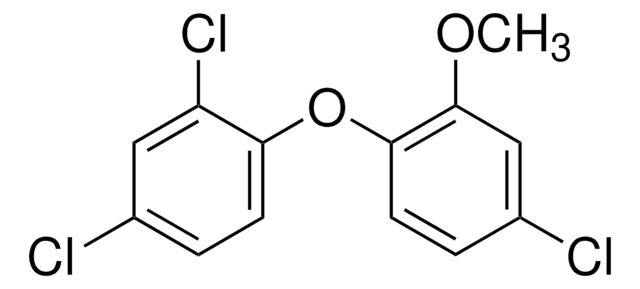S8307
SB 203580
≥98% (HPLC), solid, p38 MAPK inhibitor
Sinónimos:
4-(4-Fluorophenyl)-2-(4-methylsulfinylphenyl)-5-(4-pyridyl)-1H-imidazole
About This Item
Productos recomendados
product name
SB 203580, solid, ≥98% (HPLC)
Quality Level
assay
≥98% (HPLC)
form
solid
color
white to off-white
solubility
DMSO: ≥20 mg/mL
storage temp.
−20°C
SMILES string
CS(=O)c1ccc(cc1)-c2nc(-c3ccc(F)cc3)c([nH]2)-c4ccncc4
InChI
1S/C21H16FN3OS/c1-27(26)18-8-4-16(5-9-18)21-24-19(14-2-6-17(22)7-3-14)20(25-21)15-10-12-23-13-11-15/h2-13H,1H3,(H,24,25)
InChI key
CDMGBJANTYXAIV-UHFFFAOYSA-N
Gene Information
human ... CYP1A2(1544) , CYP2C19(1557) , CYP2C9(1559) , CYP2D6(1565) , CYP3A4(1576) , IL1B(3553) , MAPK14(1432) , MAPK8IP2(23542) , RAF1(5894) , TNF(7124)
Application
Biochem/physiol Actions
Features and Benefits
signalword
Warning
hcodes
Hazard Classifications
Acute Tox. 4 Oral
Storage Class
13 - Non Combustible Solids
wgk_germany
WGK 3
flash_point_f
Not applicable
flash_point_c
Not applicable
ppe
dust mask type N95 (US), Eyeshields, Gloves
Certificados de análisis (COA)
Busque Certificados de análisis (COA) introduciendo el número de lote del producto. Los números de lote se encuentran en la etiqueta del producto después de las palabras «Lot» o «Batch»
¿Ya tiene este producto?
Encuentre la documentación para los productos que ha comprado recientemente en la Biblioteca de documentos.
Los clientes también vieron
Artículos
Discover Bioactive Small Molecules for Kinase Phosphatase Biology
Nuestro equipo de científicos tiene experiencia en todas las áreas de investigación: Ciencias de la vida, Ciencia de los materiales, Síntesis química, Cromatografía, Analítica y muchas otras.
Póngase en contacto con el Servicio técnico









